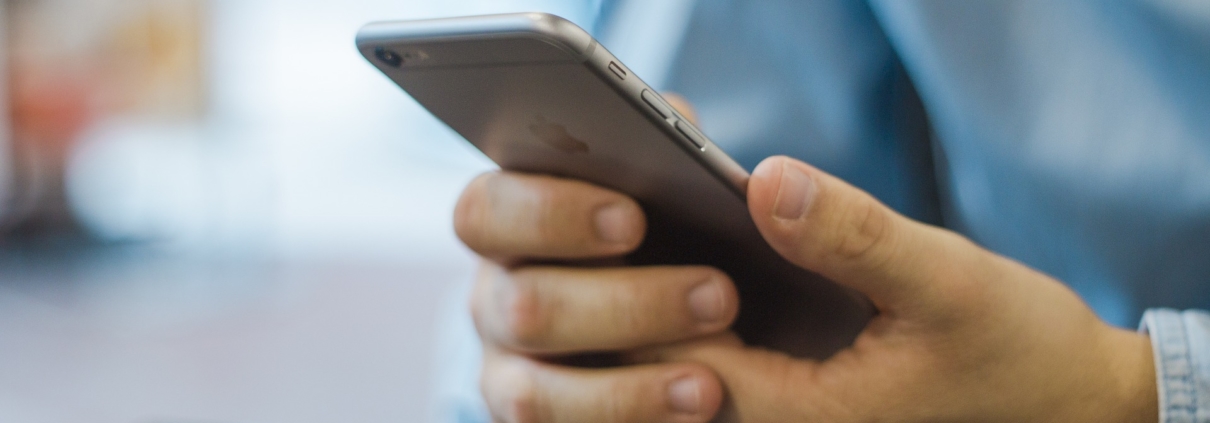It’s Valentine’s Day! Whether you’re celebrating singlehood or blissfully coupled, romance is on the brain today. And there’s no better time to consider your relationship with the media.
If you find yourself singing Adele’s “Hello” to producers and editors, and all you hear back is Beyonce’s “Sorry,” it might be time to step up your seduction. Here are three tips to woo the media this year.
Don’t Be Desperate: Swipe Right AND Left
Don’t be that person who swipes right on anything with a pulse. A quick perusal of someone’s profile may not tell you whether someone is your soulmate, but it can certainly help you find a real connection—and rule out the red flags.
The same goes for your match with the media: Know the person receiving your pitch and their work. What kinds of stories do they love? Do they tend to gravitate toward a certain style? They will know when you haven’t done your homework—and it will make them want to “ghost” on you fast.
Get to know the person receiving your pitch by checking out their social media presence. Do they engage their followers? See if you can strike up a light conversation over a tweet or post. Are they attending networking events? Try to meet them in person. (Warning: Coming on too strong is disastrous in love and in media. Definitely keep it light).
But also ask yourself: Are they a good match for ME? While it may be tempting to throw yourself at every reporter, producer, booker or editor who comes your way, that plan can backfire in the long run. If all goes according to plan, this is the start of something ongoing—better to be single than entangled in a bad romance.
Make Yourself Irresistible
If you want to get rejected by the hot girl, ramble on about her looks while you ask her out. Likewise, the media knows it’s sexy—and it doesn’t want you to use it for its body.
Another surefire way to get rejected? Toot your own horn so much, you compose a symphony to your greatness. Confidence is hot, but narcissism is a real turn-off.
The key to being irresistible is simple: Be a giver, not a taker. If you want to woo the media, you’ve got to sell yourself as an attentive partner. Always link your pitch back to the audience: Why should those people care? How can you help them? How will your expertise transform their life? Show the editor or producer that you get what they do and you’re here to offer your help—not to use their platform, love ‘em and leave ‘em.
Sweep Them Off Their Feet
Picture this: You’ve just cancelled a date because you caught a monster flu. You’re a little bummed, but you were only lukewarm about the date in the first place. Thirty minutes later, the doorbell rings. You open the door and find a care package of chicken noodle soup, emergenc-C, tea, and a “Get Well Soon” card from your date. And just like that, things start heating up.
If you want to sweep the media off its feet, be the producer or editor’s hero. Don’t just figure out what they need—give it to them when they need it most.
The media needs pieces that link back to the top trending hashtags. If you’re a parenting expert, the Grammys would be the perfect moment to pitch a story on how celebrity feminists like Beyonce are changing the way our culture views motherhood. If you’re a constitutional lawyer, start drafting that pitch on what will happen next with Trump’s travel ban. Do the producer or editor’s work for them—they’ll thank you for it.
You know that getting the attention of a producer or editor is key to raising the profile of your message and your brand.
It’s just as important, however, to hold your own in front of a crowd. The ability to speak on camera and on stage are absolutely linked; they just require different applications of the same skill. And the better you get at one, the better you get at the other.
In his (fantastic) book, The Official TED Guide to Public Speaking, TED curator Chris Anderson says that as a “leader—or as an advocate—public speaking is the key to unlocking empathy, stirring excitement, sharing knowledge and insights, and promoting a shared dream.”
Oratory, as transformative as it can be, is not magic. You can learn the skills for being a better presenter on TV and elsewhere—and public speaking is a great way to flex that muscle often.
Here’s what great speakers have in common with go-to media experts.
- They know why they’re there—and why you’re there.
A great speaker, like a go-to media pro, is attuned to both. The way you think about the different audiences on television or in magazines is precisely how you should think about event attendees. Know exactly why they’re there.
I always ask the event organizer not just what the event is for (“women’s networking” or “stress relief for our employees”), but literally why they are there. In the room. Meaning: did they pay $200 a plate to attend, or did the boss say, “You have to go to this.” When you know this, you can shape your talk and expertise to serve that need first. - They work hard to keep your attention.
Believe it or not, I think public speaking can make presenters lazy—because they have a captive audience who claps when they’re done (which they do no matter what they think). The strongest, most effective speakers treat that audience the way they would a media viewer, whose finger is poised to change channels in a heartbeat.
Realize that just because your audience is sitting there doesn’t mean they’re “there.” The best speakers work hard to keep you engaged—by being entertaining, piquing your curiosity, making you laugh, inviting you to participate.
You have seen speakers fail to do this (when they take the stage, you start scrolling through your email). Make it your goal not just to dispense information to your audience, but realize that everyone is a half second away from tuning out. Everything you choose to say should connect with a reason why they should care. - They stick to the point.
In media, you’ve got seconds, not minutes. And with such a tight window in which to deliver key talking points on air, you know you’ve got to stay on topic.
Same goes for speaking. Thirty minutes flies, too (trust me on that). Don’t assume you can squeeze all you’ve got into a 30-minute sized bag. Instead, think of every talk as a carry-on suitcase: You only have enough space to pack what they can take with them that day. You can’t pack everything, and shouldn’t try.
You should be able to make a case for why you’re including every point, every paragraph (as I do when I’m packing three pairs of shoes for a weekend trip). Beware the temptation to go on and on because they’re sitting there. Be sure that your goal first and foremost is to solve the problem you’re there to solve—and do it efficiently.
(Want to be a better speaker? Have dreams of giving a TEDx talk? Register for my FREE online training, “5 Steps to a Killer TEDx Talk—Even If You Don’t Have a Topic.” It’s happening live this Wednesday, February 1st and Thursday, February 2nd 2017. Hold your seat!)
Terri Trespicio is the co-creator of Lights Camera Expert, a six-week program that teaches experts, authors, entrepreneurs how to get, and keep, media attention. Visit her at territrespicio.com.
Imagine having about 3 seconds to decide to keep or toss an email. Hundreds of emails. That’s what a typical day is like for a producer or editor. We get so many emails into our inbox that it’s impossible to look at them all. So they have to really catch our attention and make us want to find out more.
There are some that pop up over and over again and make us cringe. Don’t make the mistake of sending one of these subject lines to a journalist – she will likely hit delete immediately.
Bad Subject Line #1: What stories are you working on?
Ugh this is a common mistake. You think you’re being inquisitive and conversational but instead you are inadvertently rubbing a producer the wrong way with this subject line. Here’s why — it makes us do all the work! We have to stop, think about it and write you back. Plus, we might not even know who you are and definitely don’t have time to do an audit of all the stories we are working on.
Instead, make your offer. Tell me how you can help me do my job better. Is it that you are an expert in Jamaican cooking and you have a few simple recipes to share for the cold winter months? Or maybe you’re a publicist and you have several experts to share. Give up the goods! Show me what you can do to help me lighten my load, don’t add to it.
Bad Subject Line #2: Can I pitch you?
You’ve already lost my interest. Don’t ask to pitch – because you could have wasted your one shot at getting a journalist’s attention. I have no idea what is inside this email by this subject line – it doesn’t give me one detail. So I will just pass it by.
Instead, be catchy. Lay out your topic in a compelling way. Watch some TV news shows to get this tactic down. You know right before they go to commercial how they say “Coming up after the break” and go into what’s still to come? Well those are called teases and they are meant to whet your appetite and keep you watching. Do the same with your subject line. Make me want to find out more about what you’re offering.
Bad Subject Line #3: Can I call you about this?
No, I don’t have time to talk to you. I just don’t—especially when you haven’t made it clear what you’re pitching. So unless I know what I’m going to get from you, the answer is no.
Instead, give me a glimpse. Show me what you as an expert can give my audience. The one question you should be answering with your pitch is “why do I care?” And that “I” is the producer or editor who is sitting in the place of her audience. So why does that audience care about what you have to say?
Bad Subject Line #4 : Anything including “breakthrough” or other over-the-top claim
While obviously something described as “breakthrough” may initially get my attention, my BS meter is highly calibrated—people are always try to dupe us this way to get media coverage. I’ll know in seconds whether you’ve got the goods. So you better be sure you do. Because fool me once…and that’s it. Make a big claim, and fail to deliver, and I will no longer take your pitches seriously.
Instead, deliver on your promise. Make sure whatever it is that you choose to send to a journalist is rock solid information. Don’t go all over the top or outlandish to get our attention if you can’t deliver. Be careful with how your frame your stories because more than just getting media exposure you want to develop real relationships with members of the media. How do you think we find our recurring guests? Those are the ones that deliver quality content over and over again and never try to trick us.
Paula Rizzo is the co-creator of Lights Camera Expert, a six-week program that teaches experts, authors, entrepreneurs how to get, and keep, media attention. She’s also the author of Listful Thinking: Using Lists to be More Productive, Highly Successful and Less Stressed and founder of ListProducer.com.



